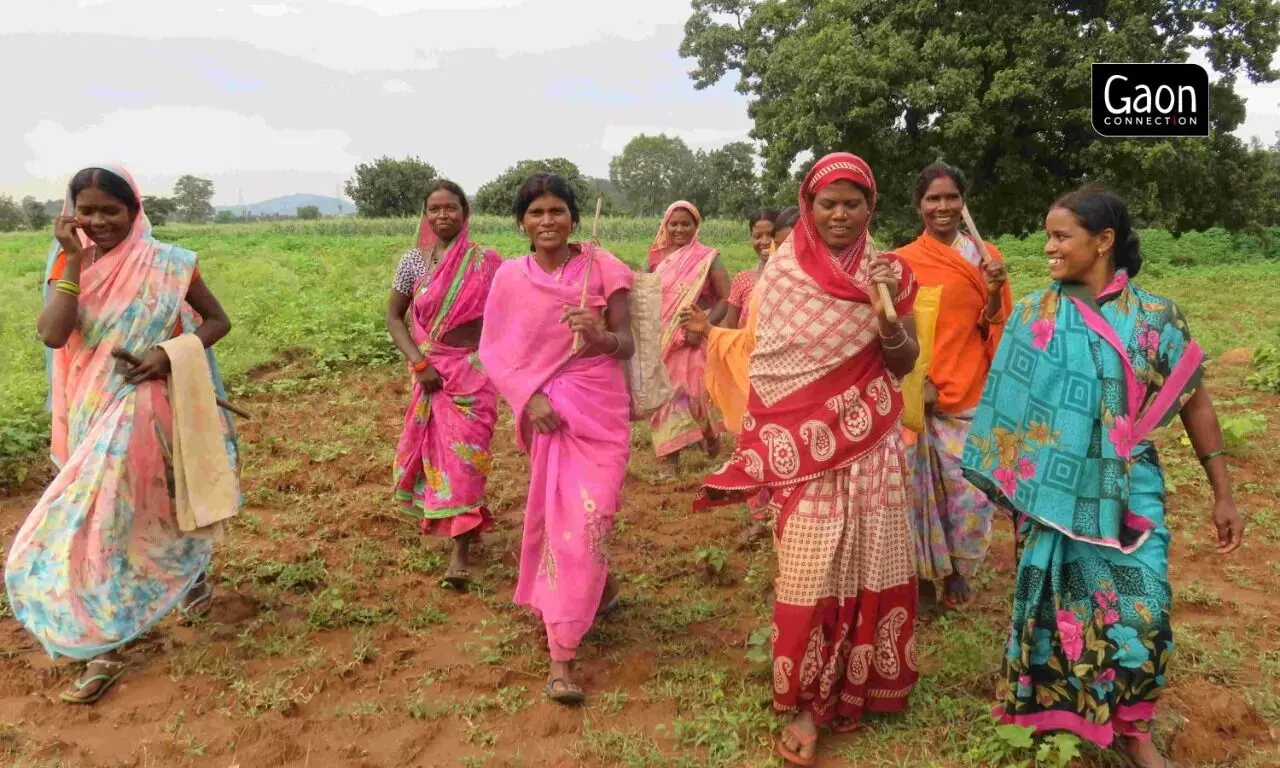The reach of ‘development’ amenities and facilities such as all-weather roads, telephones, educational institutions, health infrastructure, etc. are poorer in Adivasi villages as compared to the non-Adivasi villages of the same geography, noted the State of Adivasi Livelihoods 2021 report.
For instance, the percentage of Adivasi villages having public transport connecting them to block headquarters was 46 per cent in Jharkhand and 57 per cent in Odisha as compared to non-Adivasi villages for whom it was 60 per cent and 80 per cent respectively, the report stated. For particularly vulnerable tribal groups (PGTV), the figure was 60 per cent in Odisha.
Similarly, while the access to primary schools for both Adivasi and non-Adivasi groups was 87 per cent in Jharkhand, it was 78 per cent in Odisha for Adivasi group and 100 per cent for non-Adivasi group. This highlighted the stark difference, as per the findings of the report.

Also Read: Tribal women from Koraput make a clean sweep with traditional brooms
The report was released on April 18 in a virtual event by Arjun Munda, the Union Minister of Tribal Affairs who mentioned that the report would be crucial for policymakers and civil society organisations working closely with these communities for their betterment in the near future.
“Adivasis have been inhabiting the forest areas and living in close proximity with nature for generations. They have a lot of potential but it is important to have faith in their abilities and link them with the market systems without compromising their innate relationship with nature, including forests,” the minister added.
The report was prepared by Delhi-based non-profit, Professional Assistance for Development Action (PRADAN) which works with India’s rural poor, and it was sponsored by the Ford Foundation.
It aimed to be the first among a series of periodic reports on the status of Adivasi Livelihoods in central India; however, the current report only covered the status of Adivasis in the states of Jharkhand and Odisha, as per the press release of the report.
The data for the report was collected through a household questionnaire survey in approximately 5000 sampled households, a village survey in 254 villages, focus group discussions in 28 villages, and interviews of 40 Adivasi scholars, social workers, etc.
Key Findings of the report
The report provided data about the education attainment of the household head.
“Heads of households of over 82 percent Adivasi and 72 per cent non-Adivasi homes are educated less than matriculation (10th) in Jharkhand. These numbers are 90 per cent, 87 per cent and 82 per cent for PVTG, Adivasi, non-Adivasi respectively in Odisha,” the report stated.
With the exception of the non-Adivasi group in Jharkhand where there is a higher percentage of males with matriculation and above as compared to females, the percentage of females with matriculation and above is more than males for other groups, it added.
The report also shared data about functional literacy in the two states and highlighted that around 45 per cent male and 63 per cent female from Adivasi households, in Jharkhand, couldn’t read or write at all. For the non-Adivasi households, the corresponding figures from Jharkhand were 30 per cent and 52 per cent respectively.
“In Odisha, 55 per cent male and 75 per cent female from Adivasi households can’t read or write at all. The corresponding figures for Non-Adivasi are 38 per cent and 55 per cent; for PVTGs these are 42 per cent and 73 per cent,” the report highlighted.
The average annual income for Adivasi households was estimated at Rs 75, 378 and Rs 61, 263 in Jharkhand and Odisha respectively.
“However, the crop diversity continues to be quite rich. Even under rainfed conditions and perhaps because of it, Adivasi households reported growing crops from a menu of 20 crops,” the report stated.
The report touched upon various aspects such as the cultural ethos of Adivasi which shapes their livelihoods practices, resource conditions, external interventions, attributes of the households such as literacy, landholding, etc, and the income, food security and other livelihood outcomes.


















